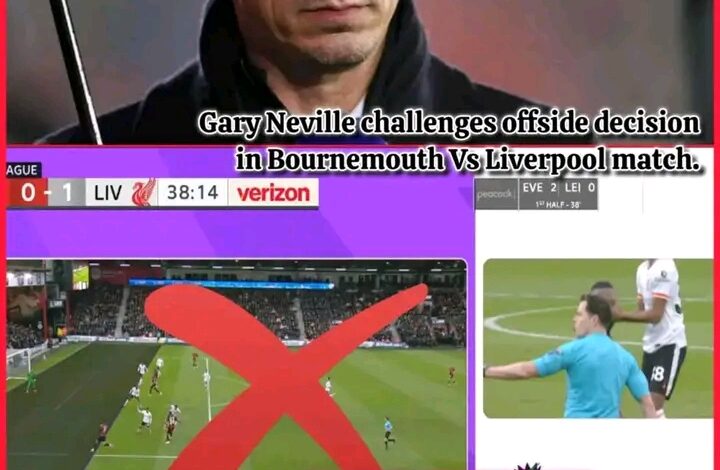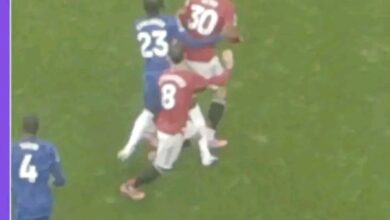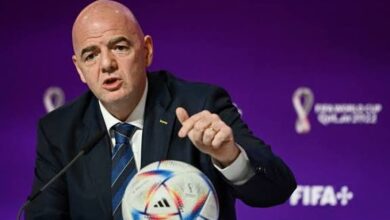That was not an offside goal for Bournemouth today, and the offside line appeared to be deliberately altered. Gary Neville, who stated that he watched the entire 90-minute match between Bournemouth and Liverpool from his apartment, has now presented strong arguments explaining why the goal should have stood, supporting his claims with evidence. We can all agree that Gary Neville talks a lot most of the time. But if we actually pay attention to what he has said so far, along with the evidence he provided, there is some truth in it especially that second image he provided!.

Offside Dispute in Bournemouth vs. Liverpool Match Ignites Debate
A contentious offside decision in the recent Premier League match between Bournemouth and Liverpool has sparked intense discussions among fans and analysts.
The controversy revolves around a Bournemouth goal that was ruled out, with many questioning whether the VAR offside line was accurately applied, leading to concerns about inconsistency in officiating.
Gary Neville’s Take on the Decision
Former Manchester United defender and football analyst Gary Neville has voiced strong opposition to the call, backing his stance with video analysis.
During his segment on Sky Sports’ Monday Night Football, Neville analyzed the disallowed goal after reviewing the full match from his apartment. He pointed out that the attacking player appeared to be level with the last defender when the ball was played, yet the VAR offside line seemed misaligned.
Emphasizing the impact of VAR errors on match outcomes, Neville called for greater accuracy and transparency in officiating to prevent similar controversies in the future.
Comparisons to a 2015 Incident
Neville drew parallels between this incident and a 2015 match where Liverpool defeated Bournemouth 1-0. In that game, Christian Benteke’s goal was allowed to stand despite Philippe Coutinho being in an offside position and interfering with play.
At the time, both Neville and Jamie Carragher criticized the decision, arguing that Coutinho’s positioning obstructed the goalkeeper and should have resulted in an offside call.
Expressing his frustration with the constant modifications to offside rules, Neville remarked, “They change the offside rule every year, yet it never seems to improve.”
His comments reflect the ongoing debate over how offside should be interpreted and enforced in modern football.
Did VAR Get the Offside Line Wrong?
Neville’s analysis suggests that the VAR offside line may have been incorrectly placed or manipulated, leading to a questionable disallowance.
His frame-by-frame breakdown shows that the Bournemouth attacker was in line with the last defender at the moment the ball was played, raising concerns about the reliability and consistency of VAR decisions in crucial match situations.
Renewed Scrutiny on VAR and Offside Interpretation
This incident has once again put VAR under the spotlight, with fans and analysts questioning its effectiveness and the lack of consistency in offside rulings.
Many are now advocating for clearer guidelines and technological improvements to ensure fairer and more accurate decisions.
The Professional Game Match Officials Limited (PGMOL), the body overseeing referees in English football, has yet to release an official statement on the matter.
As discussions continue, this case highlights the ongoing need for continuous review and refinement of VAR protocols to uphold the integrity of the game.
Neville’s insights contribute to the growing conversation on how football can better integrate technology with rule enfor
cement to ensure fairness in the sport.




